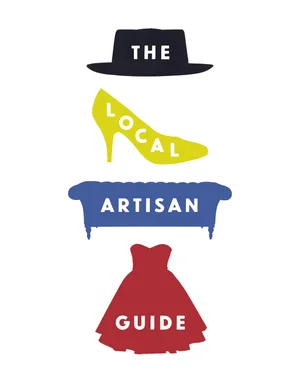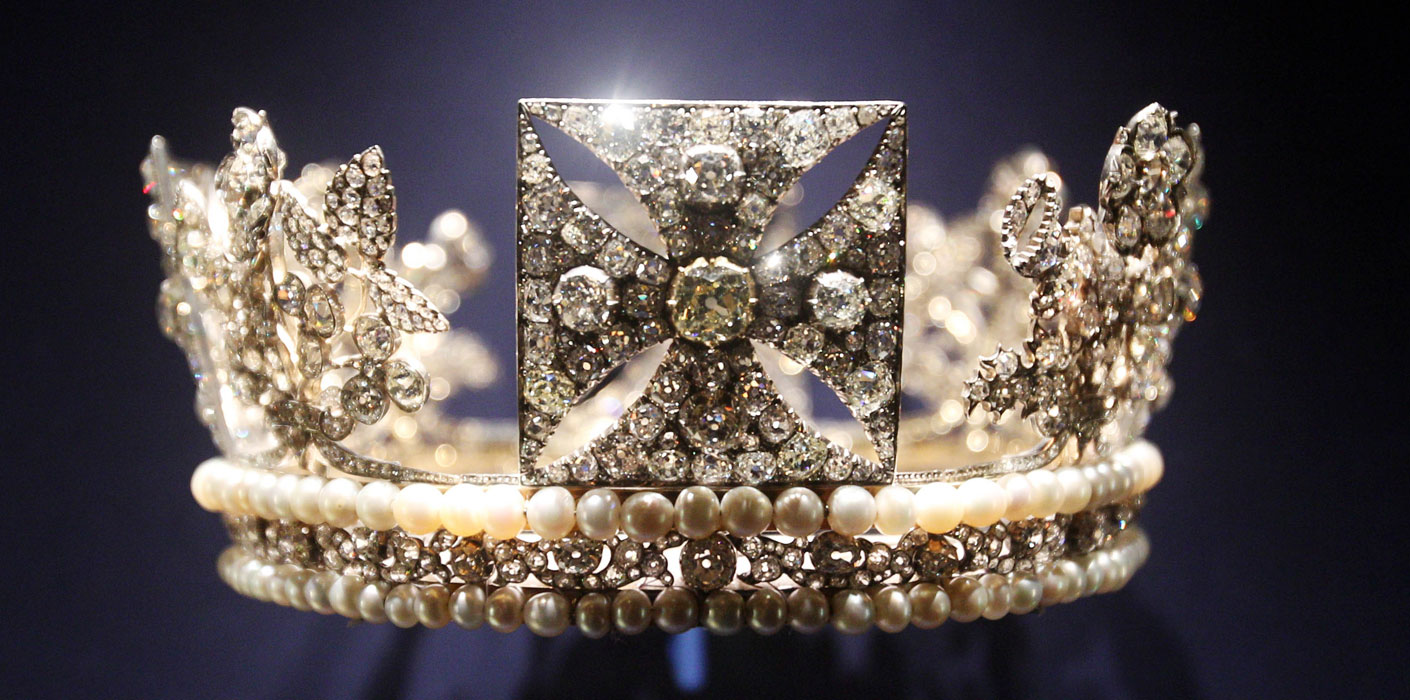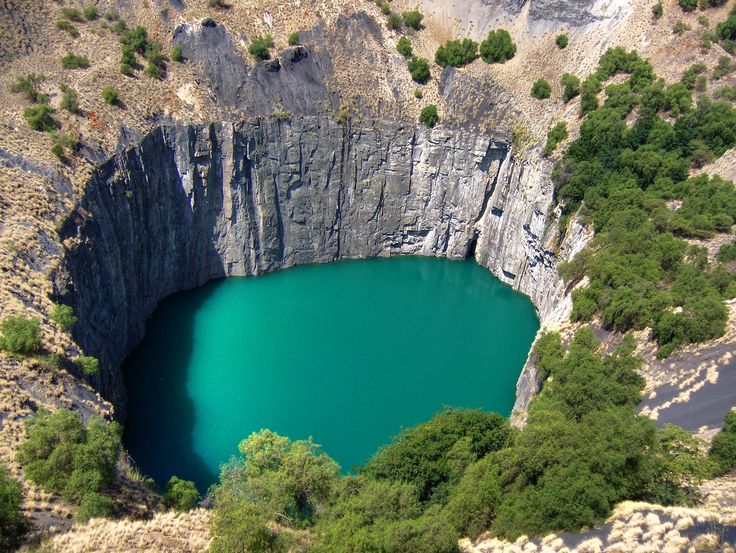A few weeks ago I was attending a lecture at the National Arts Club in New York City as they frequently feature talks on fashion related to a book with a particular topic and the author present to discuss and answer any questions.
This particular week they had Aja Raden, a Beverly Hills gemologist, jewelry designer and author who was discussing her New York Times Best Seller, “Stoned: Jewelry, Obsession and How Desire Shapes the World”.
That evening Ms. Raden displayed her incredible talent for story-telling as she kept her audience captivated while revealing secrets of the jewelry trade. She related true stories and amazing facts about jewelry throughout the ages. I highly recommend the book, it is a fascinating read for both men and women especially if you enjoy history, politics and stories of scandals.
Aja Raden, author of "Stoned: Jewelry, Obsession and How Desire Shapes the World”.
After the lecture I knew I had a blog topic for The Local Artisan Guide as she discussed in detail the diamond trade and all the myths and marketing secrets we have come to accept from this controversial industry.
Years ago a friend of mine who specializes in high end commodities had related to me in passing that diamonds were actually very common and not at all rare. He told me diamonds are hoarded by monopolies and that in reality they really are worth in the area of $300 a carat. He warned me not to waste my money on them should I ever be in market for a diamond. I believed him as he is at the top of his field, however I had no interest in buying high end jewelry for myself and was not looking to become engaged anytime soon so I never really thought about the topic again.
Ms. Raden confirmed my friend’s statement about the false myth of diamonds being a rarity and explained how giant monopolies such as De Beers not only horde diamonds, but through the art of advertising portray to the world a narrative that diamonds are rare stones and hard to find.
Diamond engagement rings designed by Aja Raden.
De Beers used marketing to create and manipulate demand for diamonds from nothing. Many in advertising and marketing point to De Beers as the original creators of modern day marketing and advertising because of this very feat. It all began in 1870 when huge sources of diamonds deposits were found in the mines of South Africa. Before 1870 diamonds were a rare stone that usually found its way only to the aristocracy and the moneyed classes. British financiers purposely made up a plan in 1888 to make sure the diamond market would not be saturated and this included, 1.) creating De Beers Consolidated Mines, Ltd. to stockpile diamonds and control the price per carat and 2.) create demand for diamonds though advertising and marketing.
Eventually due to both World War I and World War II many fortunes of European family dynasties and monarchies were lost forever, which meant no demand and no one to sell diamonds to. De Beers decided that they would create a marketing campaign in which every family should want and desire a diamond, thus the creation of the diamond engagement ring was born. Although the concept of an engagement ring had been around since Medieval times, diamonds were rarely used as the stone of choice for the ring. Since the United States was one of the few countries during both world wars that did not lose a vast majority of their wealth De Beers focused on the US as their audience and main source of consumers.
Queen Elizabeth II's Diamond Diadem. Diamonds were used for royal jewelry, crowns and tiaras before large sources were located in South Africa.
Before the world wars the US had little interest in diamonds especially regarding to as an engagement ring. De Beers hired Philadelphia ad agency N.W. Ayer in 1938 to research using marketing and find out what Americans thought about diamonds. They found Americans thought back then diamonds were only for the very rich. N.W. Ayer had to figure out how to convince an American, especially in tough economic times that they needed to have a diamond. What they found was that if the diamond was tied to a emotional purchase such as love and marriage, the diamond would not only be purchased but never resold (another important goal for the diamond industry). That is how the diamond engagement ring was created in the United States.
Creator of modern marketing and advertising N.W. Ayers.
N.W. Ayers cleverly instituted a marketing scheme that involved using that relativity new industry, Hollywood. At the time they had big celebrities of the day wearing diamonds and showing off their diamond engagement rings. The agency had the narrative of diamonds and diamond engagement rings written into movie scripts, radio, the press and fashion magazines. They never mentioned De Beers, they just mentioned the idea of the diamond engagement ring (it didn’t matter to De Beers since in the end they would be supplying the stone).
Hollywood was an important medium in spreading the word that diamonds are a girls's best friend. Here are four major Hollywood stars that are synonymous with diamonds. Clockwise Audrey Hepburn, Elizabeth Taylor, Grace Kelly and Marilyn Monroe.
N.W. Ayers then started instructing how to buy a diamond making sure the general public was aware of cut, clarity and color but most importantly N.W. Ayers instituted how much a young man should spend on a diamond and gave a formula to the consumers; the diamond industry advised you should spend at least three months of your salary for the diamond engagement ring to give to your intended.
The end result of N.W. Ayer's ad campaign, the diamond engagement ring.
Then the slogan to end all slogans was created for the diamond industry, “A diamond is forever” and since then Americans and now countries around the world have bought into De Beers very successful and long running ad campaign on how every marriage proposal should include a diamond engagement ring. By developing this concept which is just about only 80 years old, De Beers managed to created value over nothing.
One of the best known advertising slogans, "A Diamond is Forever".
When Ms. Raden explained this to us, I could hear some of the gentlemen in the audience start to rumble. The man sitting behind me mumbled to his wife, “Well that is 80k down the drain.” as she tried to shush him. Today when you purchase your diamond, as soon as you exit the store it loses immediately half of its value, then it only goes down from there. So if you are spending 80k on a diamond, you lose 40k as soon as you leave the shop. Most people pride themselves in being financially savvy in their investments, in any other circumstance we would step away from such a lost of income, however the audience for a diamond seems to be unaware of their hard earned money lost forever.
Ms. Raden then displayed slides of the chemical compound that makes up diamonds. The chemical compound of a diamond is C which stands for carbon. Graphite and soot also share this chemical compound. What makes a diamond different from graphite and soot? Its called an “allotrope” which means it is a form of an element that has different physical properties (eg. color, crystal shape, hardness, melting points, boiling points, etc.) due to different arrangements of atoms or molecules within the structure. So though diamonds share the same chemical compound, the only difference between diamonds, graphite and soot is how the C is arranged. While diamonds are one of the hardest substances on earth, graphite and soot are of course a much softer substance.
The only difference molecular wise between diamonds and graphite is the molecular structure.
Ms. Raden also informed us that once a diamond is mined it starts to “soften up.” Of course this takes many decades but eventually you can expect your diamond to start chipping away, perhaps not in your life time but don’t expect your great, great grandchildren to inherit a diamond that cannot be damaged.
Ms. Raden advised the audience if they were seeking to purchase a diamond that she would recommend that they either 1.) get it from a pawn shop as there are many diamonds in good condition available for a small fraction of the price they were originally purchased at. 2.) purchase a diamond grown in a lab.
A great place to find recycled jewelry at a great price is in a pawn shop.
Ms. Raden as I mentioned earlier is a gemologist. She related that not only is the lab grown diamond equal to a mined diamond, a seasoned jeweler cannot tell the difference between a lab grown diamond and a mined diamond. They would need special tools in which to determine the light ranges in each particular diamond (using these tools requires a hefty price in the first place). Most lab grown diamonds have “lab grown” lasered on in the bottom. They are not of the family of cubic zirconia they are the same chemical compounds and chemical arrangement as mined diamonds. They are not fake.
Lab grown diamonds obviously jeopardize the diamond industry and the sense of rarity they have worked hard for the general public to believe. De Beers, diamond jewelers and others that rely on mined diamonds will try their best to dissuade the public from purchasing lab grown diamonds by out and out lies and deception. That is to be expected as it is a multi-billion dollar business. They will tell you that mined diamonds are “rare” and lab grown diamonds are “fake” both false statements.
In the last few decades a few jewelry brands have been marketing a “conflict free diamond” meaning that it is not a blood diamond as the diamond trade is one of the most conflict-filled industries in the world with blood, greed, enslavement, corruption and pollution on its hands. In order to distance themselves from this negative press, many brands have stated their diamonds are conflict-free which means they have followed “The Kimberley Process Certification Scheme”. The Kimberly Process Certification Scheme was developed by the UN and outlines the regulations and requirements countries must follow to make sure a diamond is mined and shipped in a humane, legitimate way. Diamonds that meet these regulations are shipped with a Kimberley Process certificate. When you buy a conflict-free diamond, the jeweler should be able to provide this certificate -- if they can't, you should be wary of the stone's origin. Brilliant Earth is a highly recommended brand with high ethical standards for mined diamonds.
The original mine in South Africa where large deposits of diamonds were found and are still mined, Kimberly Mine.
However as you can surmise a conflict-free mined diamond is still a mined diamond. Mining always brings devastation to an environment no matter what the substance being mined for. So the question is if you can buy a diamond that does not harm the environment, is of excellent quality and has a significantly lower price point than a traditionally mined diamond (forgot to tell you that little fact), shouldn’t that be the logical choice?
Instead of spending 10k on a diamond, you can spend 2k for the same stone, save the rest of your money for your honeymoon, new home, children, travel, a rainy day, etc. No one would know the difference. You would just have to release your mind from a sales narrative created 80 somewhat years ago that we all have fallen for.
When I started to research brands that offer lab grown diamonds I was impressed not only by the product and the ridiculous savings in cost, but that they run their businesses in a transparent and ethical manner you see missing from the diamond industry (actually most industries).
Diamond Nexus is such a company. Diamond Nexus houses their facilities in Milwaukee, Wisconsin and is proud to offer a product made in American paying their workers fair living wages. They hired old-school master goldsmiths and jewelry-making artisans who believed in quality and make the jewelry right there in their workshops. The company prides itself on its customer service and their customer ratings are quite positive. Best of all they pass on the savings of having a lab grown diamond to you the consumer.
Just one of the many diamond engagement ring designs at Diamond Nexus.
One other benefit of lab grown diamonds is that they can be used in industry for tools in a manner that passes on the low cost of the diamond to the customer. The fact that the environment will not be harmed is a mere bonus as lab grown diamonds have a drastically lower rate of carbon emissions.
Lab grown diamonds.
Ms. Raden will be coming out with two addition books for an overall jewelry trilogy (“Hammered” and “Rocked”). She had the courage to reveal the dirty secrets from her field and to give a ethical, conflict-free solution to purchasing jewelry, especially diamonds. She has given the customer the ability of not only purchasing stones in a knowledgeable, ethical manner but also saving themselves a substantial amount of money by not buying into a false narrative propagated by a corrupt and gluttonous industry.
By Natalie Rivera













